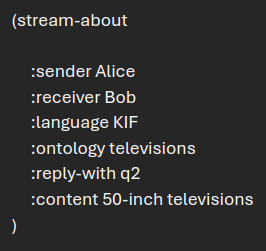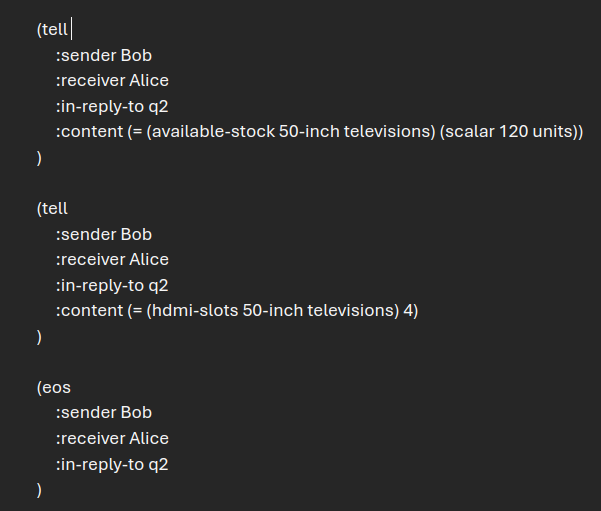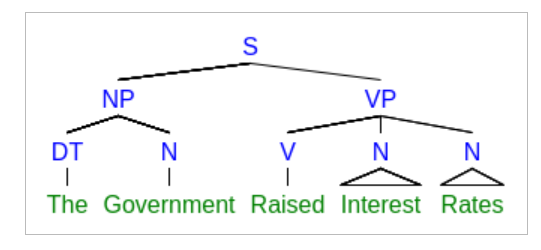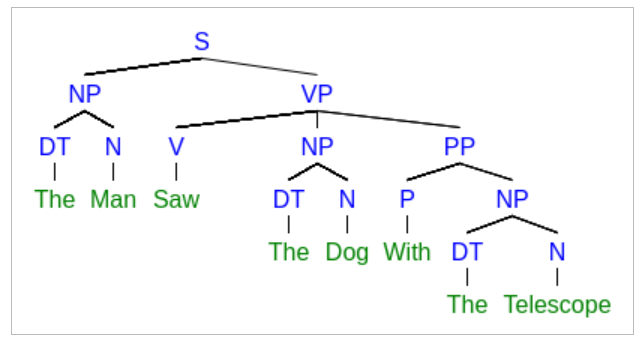The intelligent agents’ module has been a great learning experience with exciting and challenging times. I have gained the necessary skills and knowledge that qualify me to use and build agent-based systems in real-world scenarios. In this reflection, I will elaborate on my personal journey throughout this module, highlight the critical moments within the assignments and group project, and finally, I will discuss how this affects me in my professional career.
In the first Unit, the term intelligent agent was not a very familiar term in my experience. However, I was very excited to pursue the challenge. The past modules addressed a couple of issues with the old systems handling modern data and its size, and I was intrigued to finally be able to see a solution. The first lecture cast called introduction to agent-based computing highlighted the types of agents, and how they handle different environments. It also contained a couple of examples such as the software daemons and control systems. Additionally, the unit reading of chapter 2 of Wooldbridge, M. (2009) An Introduction to Multi-agent Systems, was an enjoyable reading. The unit also had a collaborative discussion about agent-based systems. I wasn’t able to post my initial post on time. However, once I submitted my individual presentation, I was able to research the agent-based systems, their benefits and how they affect some organisations. Key learnings from this unit can be summarised in getting familiar with the agent-systems, their positive and negative impacts, and how they can benefit the organisations. I think that more research can be done in this area to truly understand the history behind this concept and what are the potential effects it can have.
On Unit 2, the focus was on understanding the key terms and symbols used in first order logic, demonstrating the relationship between first order logic and natural language, and discussing the use of quantifiers within first order logic. All the concepts were new to me, and it was challenging to understand it. But eventually I was able to fully understand it. The unit reading was to complete chapter 8 of Russell, S. & Norvig, P. (2021) Artificial Intelligence: A Modern Approach. Harlow: Pearson Education. Although it was a long chapter, once I had gone through it, it cleared some key concepts to differentiate between natural language and first-order logic. The seminar was scheduled around my personal work meeting times. Therefore, I was not able to join it live. Though, once I had the chance later in the same day, I was able to watch it. The doctor presented the facts about the modules and the deadlines within. Due to short time, I was not able to review and respond to the discussion on Unit 1, but I have read the initial posts made by my colleagues Gaving, V, Zhu, Z, and Christopher, B.
For Unit 3, we looked at agent architectures, and the history behind agent-based systems, and investigated several examples of the mechanisms of different architectures. The required reading for this module was very challenging to finish due to the time required to complete all the chapters. I had a chance to read the summary posts in the discussions to stay in line with my colleagues.
On Unit 4, the reading material was interesting. It consisted of completing chapter 5 of Wooldridge, M.J. (2009) An Introduction to Multiagent Systems. Chichester: John Wiley & Sons. In the Seminar for this week, Dr Stelios, S. took us through first-order logic. He was able to discuss the extensions of first-order logic and the logical agents. He also mentioned briefly the group project and how groups are assigned. By the end of this unit, I was starting to get more comfortable as I had a complete idea about the first assignment and what we needed to do.
Unit 5 contained the concepts of speech acts and speech act theory, explored the concepts of ontologies and their use in agent communications, and introduced the notion of agent communication languages. The lecture cast was a good introduction to agent communication. It contained the necessary information about the different languages and approaches used within agent-based communication such as KQML and KIF. Once I understood the concept, I have proposed to my group for the project to implement it within our design later. I have also completed the unit reading of chapter 5 from Wooldridge, M.J. (2009) An Introduction to Multiagent Systems. Chichester: John Wiley & Sons.
I can describe unit 6 as the start of a challenging time within the module. That is because we had our first deadline by the end of that week. Group projects can sometimes be hard to complete because some group members can be absent or simply not contribute enough, leaving the rest of the members struggling to finish the task on time. However, on this occasion, all the group members attended each session on time, and everyone had a task assigned. The communication was seamless, and the quality of the submission met the requirements needed. I was assigned the task of writing the report and building the UML diagram that represented our design. Since having built similar diagrams before. it was a seamless experience. I was happy with the outcome.
Unit 7 focused on natural language processing. This was a familiar term due to the recent rise within NLP models. Examples such as ChatGPT and Google Gemini, and my familiarity with them made me intrigued to understand the backend behind these systems. The lecture cast was an enjoyable experience as it introduced natural language processing and the techniques used to interpret human language even though it can be quite challenging. I still think this will be a big challenge in the future since even we humans struggle to understand each other sometimes.
In Unit 8, we deep-dived into the natural language processing by looking at parse trees. The activity for this week was challenging. It was to create a constituency-based parse tree. Since I have never worked with anything similar before, I had to research parse trees and the techniques used to implement them. Once the concept was understood, creating the actual trees was a fun experience.
In Unit 9, the lecture cast explored the adaptive algorithms and their core functionalities. It discussed the strengths and weaknesses of the technology and the new opportunities it can bring. The collaborative discussion had its second week. However, no posts were submitted.
For Unit 10, we investigated Deep learning in action. The unit reading of World Economic Forum. (2022) How Deep Learning can improve productivity and boost business gave me good insights about the technology. The activity for this week was quite challenging, not due to the fact of the research but time-wise because of the couple of assignments due in the next two weeks.
Unit 11 was a very busy week, due to my work schedule and deadlines within my studies simultaneously. I was able to complete the lecture cast of Intelligent Agents in action. It was an enjoyable experience to explore industry 4.0 and the different applications of the intelligent-agent systems. The focus, however, was the presentation. I was happy to be able to develop a prototype of the group project design from unit 6. It was challenging to have a working system in a short time, but I decided to simulate all agents in our multi-agent system. I have found making the presentation was easier than building the code.
The final Unit 12 was an experience with highs and lows. The fact that the presentation was by now submitted and only the e-portfolio was left was good news. I was happy with the fact that I had been able to set it up on GitHub before, and all that was needed was to add the content. Making the e-portfolio was enjoyable since it contained a reflection of this insightful module.
Throughout the module, I gained multiple insights into intelligent agent systems that will surely play a part in my future work. I was able to recognise the value of splitting the components of a system into smaller agents and assigning appropriate language protocols. In my previous work, I often relied on monolithic systems to solve problems. But the issue with this was exactly what Intelligent agents solve. When dealing with large datasets, the latency was usually very high to almost inoperable on some occasions. The second thing was the fact that the systems always needed to be predefined and tweaked along the way. I now feel more comfortable now in building modern agent-based systems and multi-agent systems.
References
Wooldridge, M.J. (2009). An introduction to multiagent systems. 2nd Ed. United Kingdom: John Wiley & Sons Ltd. Available via the Vitalsource Bookshelf. [Accessed: 05 August 2024].
Zahedi, F. and Bansal, A. (2020). Agent-Based Control Systems: Expert Systems with Applications, 23(1), pp.11-23. Available from: https://eprints.soton.ac.uk/258563/1/ieeeCS.pdf [Accessed 15 October 2024].
Marchi, S. (2014). Agent-Based Models: Annual Review of Political Science, 17(1), pp.369-388. Available from: https://doi.org/10.1146/annurev-polisci-080812-191558 [Accessed 15 October 2024].
Wei-Po, L. Chih-Hung, L. Cheng-Che Lu (2020). Intelligent agent-based systems for personalised recommendations in Internet commerce, Brunel University, 24-26 June. Available from: https://www.sciencedirect.com/science/article/abs/pii/S0957417402000155 [Accessed 15 October 2024].
Mamadou, T.K, & Shimazu, A. (2020). The State of the Art in Agent Communication Languages. Knowledge and Information Systems 2(1) pp.259-284. Available from: https://link.springer.com/article/10.1007/PL00013712 [Accessed 15 October 2024].
Chaib-Draa, B. and Dignum, F. (2019). Trends in Agent Communication Language. Computational Intelligence 8(2), pp.15-23. Available from: https://doi.org/10.1111/1467-8640.00184 [Accessed 15 October 2024].
Labrou, Y. and Finin, T., N.R. (2022). Semantics for an Agent Communication Language 13(3), pp.1-4. Available from: https://doi.org/10.1007/BFb0026760 [Accessed 15 October 2024].
Zahedi, F. and Bansal, A. (2020). Agent-Based Control Systems: Expert Systems with Applications, 23(1), pp.11-23. Available from: https://eprints.soton.ac.uk/258563/1/ieeeCS.pdf [Accessed 15 October 2024].
Marchi, S. (2014). Agent-Based Models: Annual Review of Political Science, 17(1), pp.369-388. Available from: https://doi.org/10.1146/annurev-polisci-080812-191558 [Accessed 15 October 2024].
Wei-Po, L. Chih-Hung, L. Cheng-Che Lu (2020). Intelligent agent-based systems for personalised recommendations in Internet commerce, Brunel University, 24-26 June. Available from: https://www.sciencedirect.com/science/article/abs/pii/S0957417402000155 [Accessed 15 October 2024].





